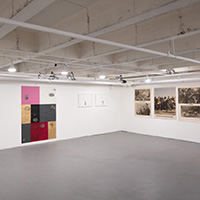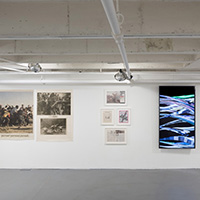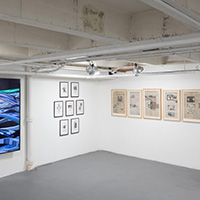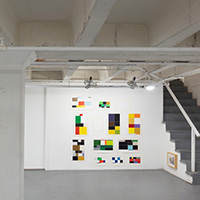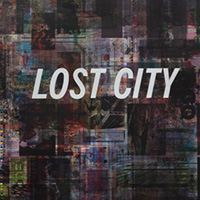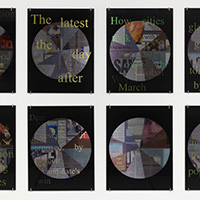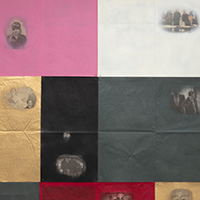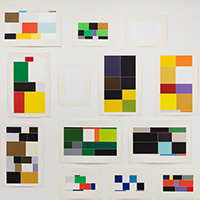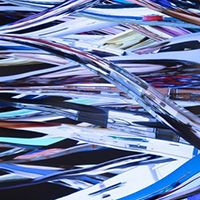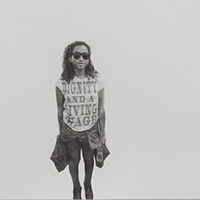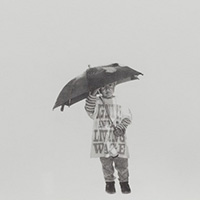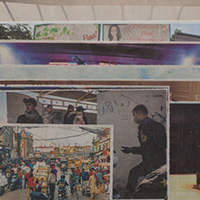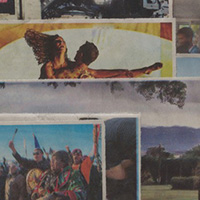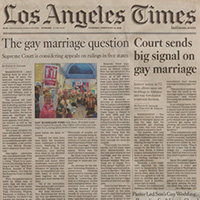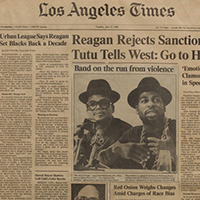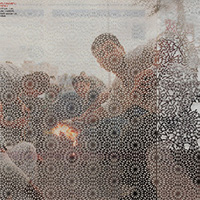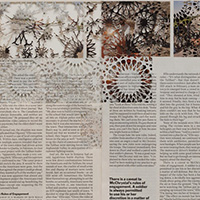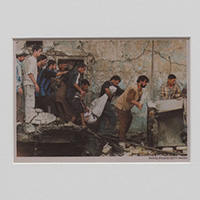Mis (Missing) Information
Co-organized by Jody Zellen and Brian Moss
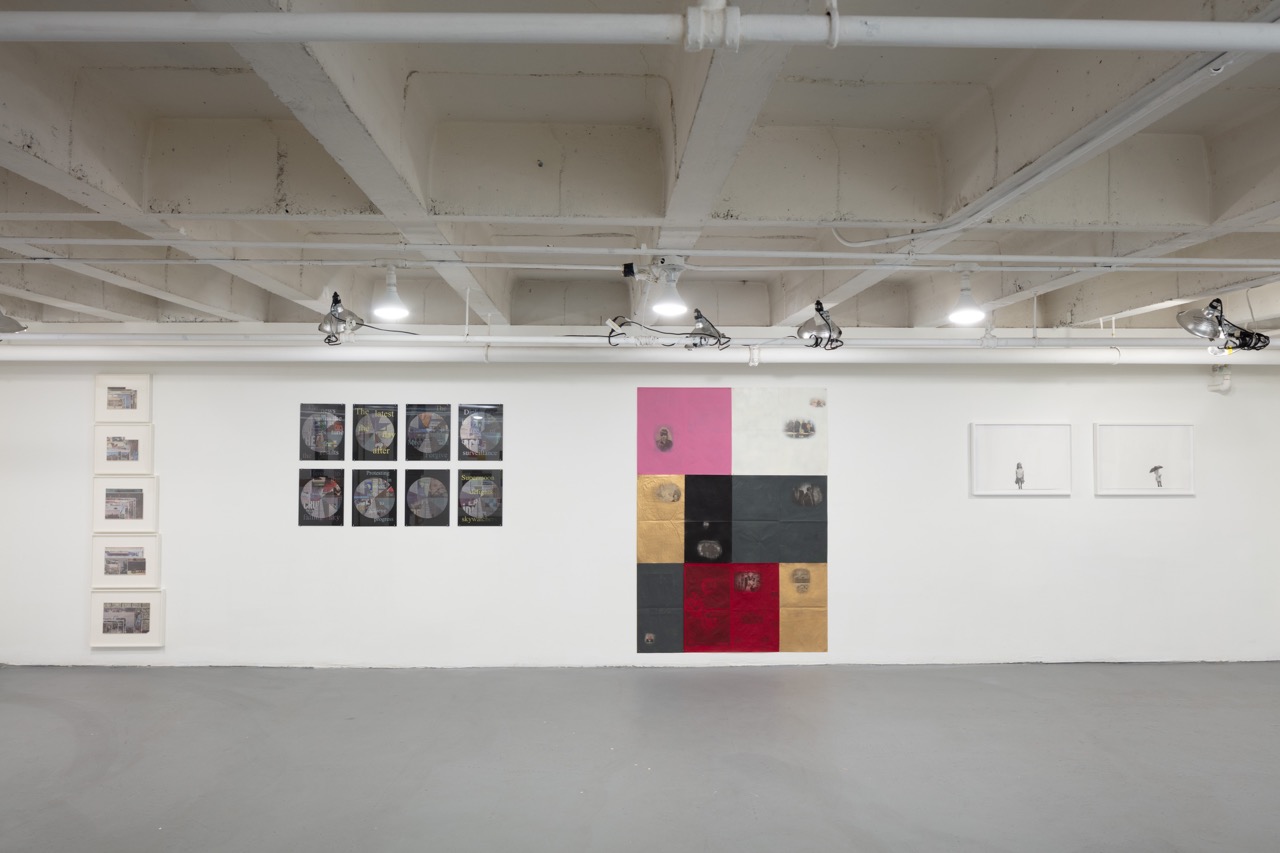
Co-organized by Jody Zellen and Brian Moss

|
Miss (Missing) Information Charlie James Gallery Los Angeles, CA April 28- June 2, 2018 gallery website Mis (missing) Information is an exhibition of artists who draw from ‘the media’ in one way or another and make works that exclude information, requiring viewers to contemplate what is missing, what is left, and why. Beginning with an image, a Google search, a make-ready or the daily newspaper, the artists in this exhibition transform the given, infusing it with new content and meaning. The artists include Merwin Belin, Jan Blair, Andrea Bowers, York Chang, Michael Genovese, Elissa Levy, Brian C. Moss, Michael Queenland, Casey Reas, Susan Silton, Samira Yamin, Andrew Witkin and Jody Zellen. Mis (missing) Information is co-organized by Jody Zellen and Brian C. Moss. While information and media have an increasingly digitized connotation, many of the artists in this exhibition start with the daily printed newspaper. It appears every morning, waiting to be read, deciphered and digested. Each edition represents an accounting of yesterday’s events and reflects our preoccupations with power and money, death and disaster, the quotidian and the glamorous, and a need to participate in the larger culture. As raw material for art, this combination of paper and ink amounts to a never-ending supply. It’s relatively cheap and endlessly varied. Most of the artists in this exhibition have a predisposition to print, as only a few have embraced digital delivery of information. The ways artists have and continue to use news media as form and content in their work is wide-ranging. Both Merwin Belin and Elissa Levy present altered newspaper pages whereas Jan Blair, York Chang, Michael Queenland and Andrew Witkin clip images and texts representing them in new configurations. Belin has fashioned his own front pages from myriad newspaper sources for decades, generating a new narrative that was arguably already there. He distills the ordinarily balanced mix of topics found on these iconic mastheads and concentrates them on a single subject. Levy focuses on shamed icons of power and loss she sees in The New York Times, such as soldiers, athletes and celebrities. Reflecting our fascination with glory and self-loathing, she spray-paints over all the text on the page, creating otherworldly silhouettes that emerge from fields of color. Blair reads the Sunday New York Times like an archeologist, looking for clues and hidden information about our civilization. Cutting and gathering as she goes, she then uses these raw materials to assemble poetic musings. Chang works from an archive of found images and text culled from years of scanning the Los Angeles and New York daily newspapers. The images and text are carefully selected and placed together simply, but positioned in relation to each other in such a way that the process of looking slows down, a matrix of new formal and conceptual connections emerge, and the boundaries between seemingly disparate things begin to break down. Queenland presents a pairing of the front and the back of a single newspaper clipping. These works have their origins in his 2012 project Rudy’s Ramp of Remainders, in which he clipped every image of a dead body that appeared in The New York Times over the course of one year. Originally displaying only the image of the body, these new works present the front image simultaneously with whatever happens to appear on the back of the clipping, sometimes text, sometimes imagery or advertising. From 2007 to the present, Witkin selects newspaper clippings because they contain printing errors (an ink bleed, a mis-registration, missing information, etc.). He then stacks the images, shrink-wraps them to a board and encases them in a custom frame. The shrink-wrapping serves to temporarily freeze the groups of clippings while the frames serve as specimen boxes. He is interested in encapsulating a selection of errors from this never-ending flow as a metaphor for engaging with todays information overload. Susan Silton and Samira Yamin are interested in transformation. Through her familiarity with the international language of commercial offset printing, since 2004 Silton has commissioned printers in different countries to create a series of posters that call attention to the relationship between different types of appropriated materials. Starting with what is meant to be thrown away, Silton uses the accumulated layers of unrelated information known as “make ready” sheets as a background for titles from popular songs that feature the word lost. Yamin creates intricate geometric patterns found in Islamic culture by hand cutting information away from a January 11, 2010 edition of Time magazine dedicated to the ongoing wars in the Middle East. She speaks to the nature of the news magazine as a reproducible and ephemeral object. Ultimately, the negation caused by the patterned cutouts forces the viewer’s imagination to complete these images of war, in turn nullifying their truth-value as visual facts. Andrea Bowers and Brian Moss also step back from the mechanical, using graphite to transcribe what they find on the printed page while selectively leaving out and/or highlighting specific content. Moss’ tracings originate in the jarring oppositions and troubling similarities seen in The New York Times every day. Distinctions between advertising and news, as well as images and text melt away as the visual cues that separate them are lost. While questioning notions of reproduction, his labor-intensive format reflects the newspapers fixation on the passage of time and contradicts the economy of cheap daily delivery. Andrea Bowers’ meticulous pencil drawings of activists reflect the artist’s years long commitment to making work in service of social justice movements. Bowers’ makes drawings of the people who commit their time, energy, and lives to the everyday labor of making positive change in our world. In the two works on view, two people involved in the “Fight for $15” are drawn wearing silk-screened shirts that Bowers designed and silk-screened with the activists. The deep personal connection and value that Andrea places on the labor of the labor movement is reflected in her tenderly time-intensive drawings. Casey Reas and Jody Zellen cull content via digital algorithms while Michael Genovese uses the computer as a point of departure, typing specific searches into Google and capturing the results before the images appear. Reas arbitrarily structures all of the images in a single day of The New York Times into a slow, continuously generating collage, dissolving the editorial hierarchy of the newspaper. He flattens the distance between these photographs into a unified image: they remain legible, but require concentration to read. In News Cycle, Zellen collages front pages and headlines originally captured by her iOS app News Wheel. Wanting to retain the dynamic aspect of the app, she created a suite of lenticular prints that call attention to the poetics, absurdity and haunting truths in newspaper headlines. Genovese begins by typing a word, or a part of a historic speech into Google image search. Because there is a delay in the transmission of the information, what first appears on screen is a series of colored boxes, à la Mondrian. Well aware that they are digital substitutes for representational images, he captures these geometric compositions and reproduces them in paint, titling them after the original search. Each artist in the exhibition mines the media looking for specific content. Their artworks call attention to what is seen, what is missing and what is inferred, as well as the myriad reasons for the disconnects between fact and fiction and the wonderful dissonances that are discerned through their creative investigations. |



